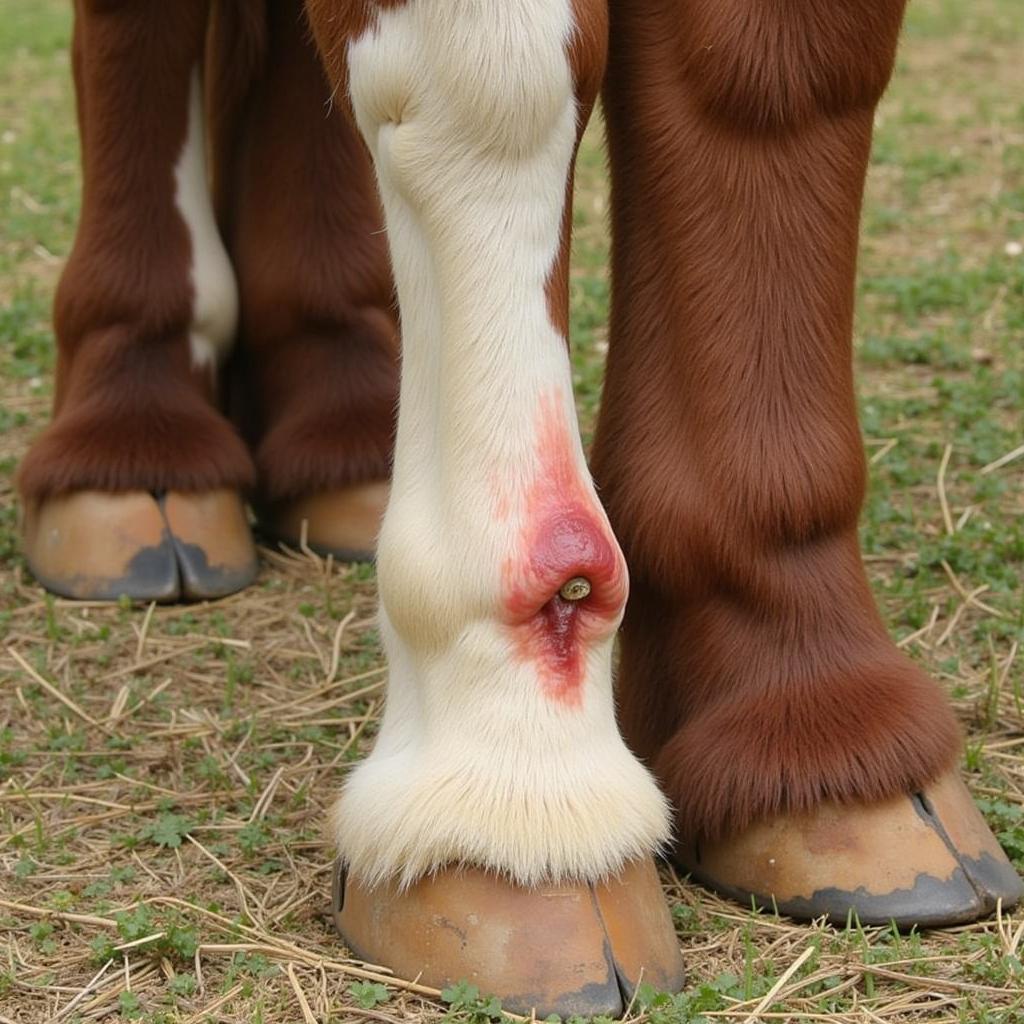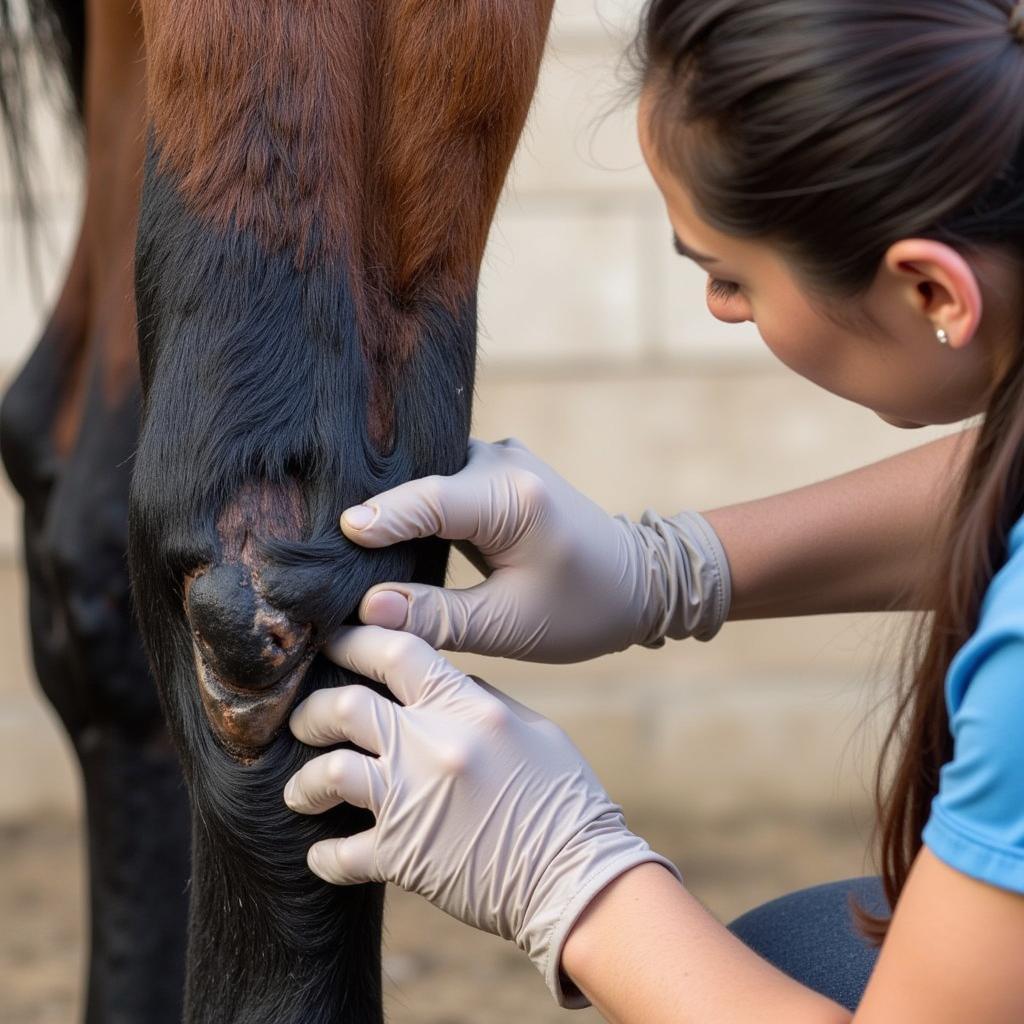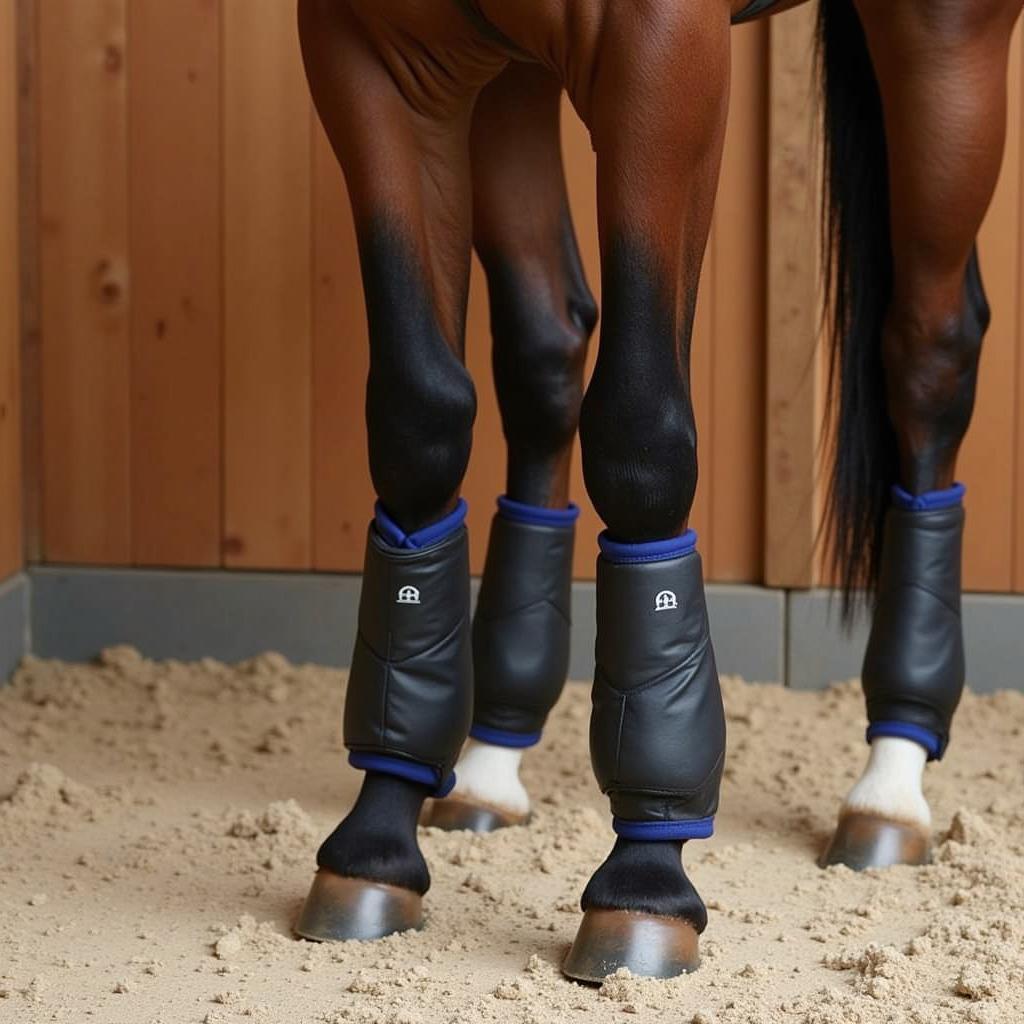Hock Sores On Horses, also known as capped hocks, are a common ailment that can cause discomfort and even lameness if left untreated. These fluid-filled swellings occur on the point of the hock, the joint that equates to a human ankle, and are often caused by trauma or repeated pressure.
 Close up of horse hock sores
Close up of horse hock sores
Understanding Hock Sores
While not usually a serious condition, hock sores can range in severity from mild to severe. They develop when the horse’s hock repeatedly hits a hard surface, such as the stall wall or the ground during lying down or rolling. This trauma damages the tissue and causes inflammation and fluid buildup, leading to the characteristic swelling.
Common Causes of Hock Sores:
- Confinement: Horses confined to stalls for extended periods are more prone to developing hock sores, especially if the stall is too small or the bedding inadequate.
- Kicking: Horses with a habit of kicking their stall walls or other objects can easily develop hock sores.
- Improper Bedding: Insufficient or poorly maintained bedding can increase the risk of hock sores, particularly when the horse is lying down.
- Conformation: Some horses are genetically predisposed to hock sores due to their conformation, particularly those with prominent hock points.
- Trauma: A single traumatic event, such as a kick from another horse or a fall, can also cause a hock sore.
Identifying and Treating Hock Sores
Identifying hock sores early is crucial for effective treatment. Look for the following signs:
- Swelling: A soft, fluid-filled swelling on the point of the hock.
- Heat: The affected area may be warm to the touch.
- Pain: Your horse may show signs of discomfort or lameness, especially when the hock is flexed.
- Hair Loss: The hair over the swelling may be rubbed off.
Treatment Options:
Treating hock sores often involves a multi-faceted approach:
- Addressing the Underlying Cause: The first step is to eliminate or minimize the cause of the trauma. This may involve providing a larger stall, increasing bedding, or using protective boots like a horse power boot designed to cushion the hock.
- Cold Therapy: Applying cold therapy, such as ice packs or cold hosing, can help reduce inflammation and pain.
- Medications: Your veterinarian may recommend non-steroidal anti-inflammatory drugs (NSAIDs) to further reduce inflammation and discomfort.
- Drainage and Bandaging: In some cases, your veterinarian may need to drain the fluid from the hock sore. This is usually followed by bandaging to prevent infection and further injury.
- Surgery: For chronic or severe hock sores that do not respond to conservative treatment, surgical removal of the fluid sac may be necessary.
 Veterinarian examining a horse's hock for signs of injury
Veterinarian examining a horse's hock for signs of injury
Preventing Hock Sores in Horses
Preventing hock sores is always better than treating them. Here are some preventative measures:
- Provide Ample Stall Space: Ensure your horse’s stall is large enough for them to lie down and get up comfortably without hitting their hocks.
- Use Adequate Bedding: Use sufficient amounts of soft, absorbent bedding, such as shavings or straw, and keep it clean and dry.
- Protect the Hocks: Consider using protective boots, especially for horses prone to hock sores or those that tend to kick.
- Minimize Confinement: Whenever possible, allow your horse ample turnout time to move around freely and reduce pressure on their hocks.
- Address Behavioral Issues: If your horse kicks excessively, consult a veterinarian or equine behaviorist to address any underlying issues.
When to Call the Veterinarian
While many hock sores can be managed with basic care, it is crucial to consult a veterinarian for proper diagnosis and treatment. Contact your vet if:
- The swelling is severe or accompanied by lameness.
- The hock sore is hot to the touch or there are signs of infection, such as pus or a foul odor.
- The hock sore does not improve with home treatment within a few days.
- You have any concerns about your horse’s well-being.
 Horse wearing protective boots to prevent hock sores
Horse wearing protective boots to prevent hock sores
Conclusion
Hock sores are a common equine ailment that can be easily prevented and managed with proper care. By understanding the causes, symptoms, and treatment options, horse owners can help keep their equine companions comfortable and sound. Remember, early detection and intervention are key to ensuring a swift recovery and minimizing the risk of complications. If you suspect your horse may have a hock sore, don’t hesitate to contact your veterinarian for prompt and appropriate care.
For more information about equine health and well-being, explore our other resources on best horse saddle pads and other horse care essentials.